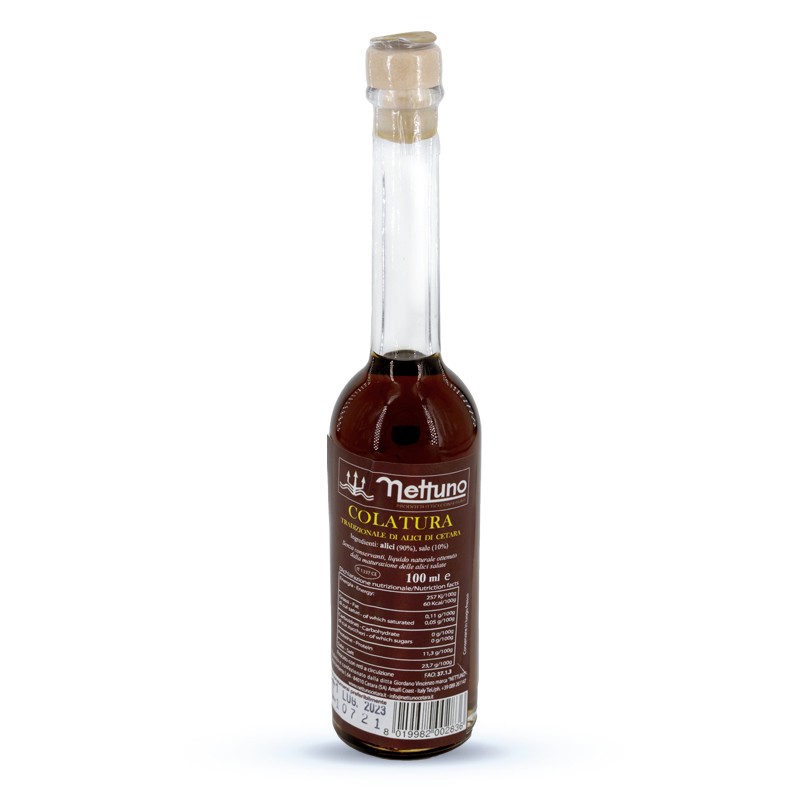




Cetara anchovy sauce is a condiment with an intense flavor and pungent aroma, obtained through the careful processing of freshly caught anchovies, still produced today according to the tradition of Cetara fishermen.
Anchovies (90%) Salt (10%)
Cetara is a fishing village on the Amalfi Coast where anchovy fishing has always been practiced: the waters of the gulf are so salty that anchovies find a fertile environment to grow and move.
It may interest you
The recipe for anchovy sauce, present in culinary tradition for centuries, was roughly described by Pliny and Horace and known as Garum. In the Middle Ages, a group of monks from Cetara recovered the ancient process. In 1807, the Franciscan friar Nicola Colummella Onorati drafted a document to codify "all useful practices for managing domestic affairs of coastal towns," thus creating the recipe for anchovy sauce. Like many recipes that are now part of gourmet cuisine, anchovy sauce was originally a humble product: it was a substitute for fresh fish to be used in the winter months when fishing was scarce and difficult.
The anchovies are placed in a small barrel, the terzigno, and arranged with the classic 'head-tail' technique in alternating layers of salt and pressed by a wooden disc on which weights are placed. The liquid secreted by the anchovies during maturation begins to rise to the surface, is collected in large glass bottles, and exposed to the sun for about four or five months, so that the water evaporates and the concentration increases. Between the end of October and the beginning of November, everything is ready for the final phase, tapping, which usually takes at least 3 years. The collected liquid is poured back into the terzigno where the anchovies have been maturing, slowly filtering through the various layers of fish and collecting the best organoleptic properties.
The liquid recovered through a specially drilled hole in the terzigno is transferred to another container and filtered using linen cloths called cappucci. The final result is a clear distillate of deep amber color, almost mahogany, with a strong and full-bodied flavor. To preserve these techniques and certify the uniqueness of the product, in October 2020 Cetara anchovy sauce was officially awarded the DOP mark. The sauce is the traditional condiment for spaghetti with clams, as well as for bruschetta, Christmas broccoli, and boiled or grilled vegetables.